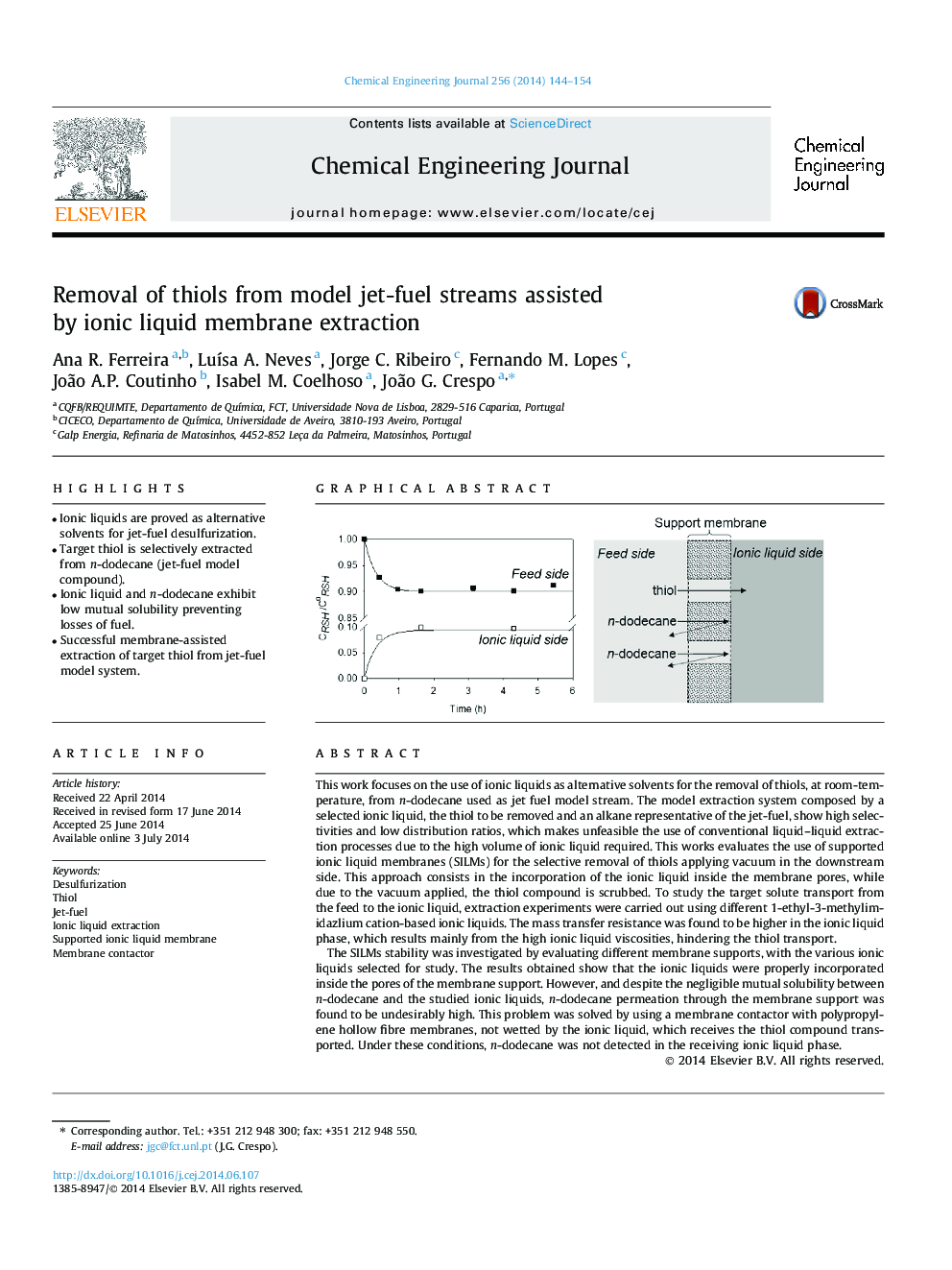| کد مقاله | کد نشریه | سال انتشار | مقاله انگلیسی | نسخه تمام متن |
|---|---|---|---|---|
| 147001 | 456384 | 2014 | 11 صفحه PDF | دانلود رایگان |
• Ionic liquids are proved as alternative solvents for jet-fuel desulfurization.
• Target thiol is selectively extracted from n-dodecane (jet-fuel model compound).
• Ionic liquid and n-dodecane exhibit low mutual solubility preventing losses of fuel.
• Successful membrane-assisted extraction of target thiol from jet-fuel model system.
This work focuses on the use of ionic liquids as alternative solvents for the removal of thiols, at room-temperature, from n-dodecane used as jet fuel model stream. The model extraction system composed by a selected ionic liquid, the thiol to be removed and an alkane representative of the jet-fuel, show high selectivities and low distribution ratios, which makes unfeasible the use of conventional liquid–liquid extraction processes due to the high volume of ionic liquid required. This works evaluates the use of supported ionic liquid membranes (SILMs) for the selective removal of thiols applying vacuum in the downstream side. This approach consists in the incorporation of the ionic liquid inside the membrane pores, while due to the vacuum applied, the thiol compound is scrubbed. To study the target solute transport from the feed to the ionic liquid, extraction experiments were carried out using different 1-ethyl-3-methylimidazlium cation-based ionic liquids. The mass transfer resistance was found to be higher in the ionic liquid phase, which results mainly from the high ionic liquid viscosities, hindering the thiol transport.The SILMs stability was investigated by evaluating different membrane supports, with the various ionic liquids selected for study. The results obtained show that the ionic liquids were properly incorporated inside the pores of the membrane support. However, and despite the negligible mutual solubility between n-dodecane and the studied ionic liquids, n-dodecane permeation through the membrane support was found to be undesirably high. This problem was solved by using a membrane contactor with polypropylene hollow fibre membranes, not wetted by the ionic liquid, which receives the thiol compound transported. Under these conditions, n-dodecane was not detected in the receiving ionic liquid phase.
Figure optionsDownload as PowerPoint slide
Journal: Chemical Engineering Journal - Volume 256, 15 November 2014, Pages 144–154
